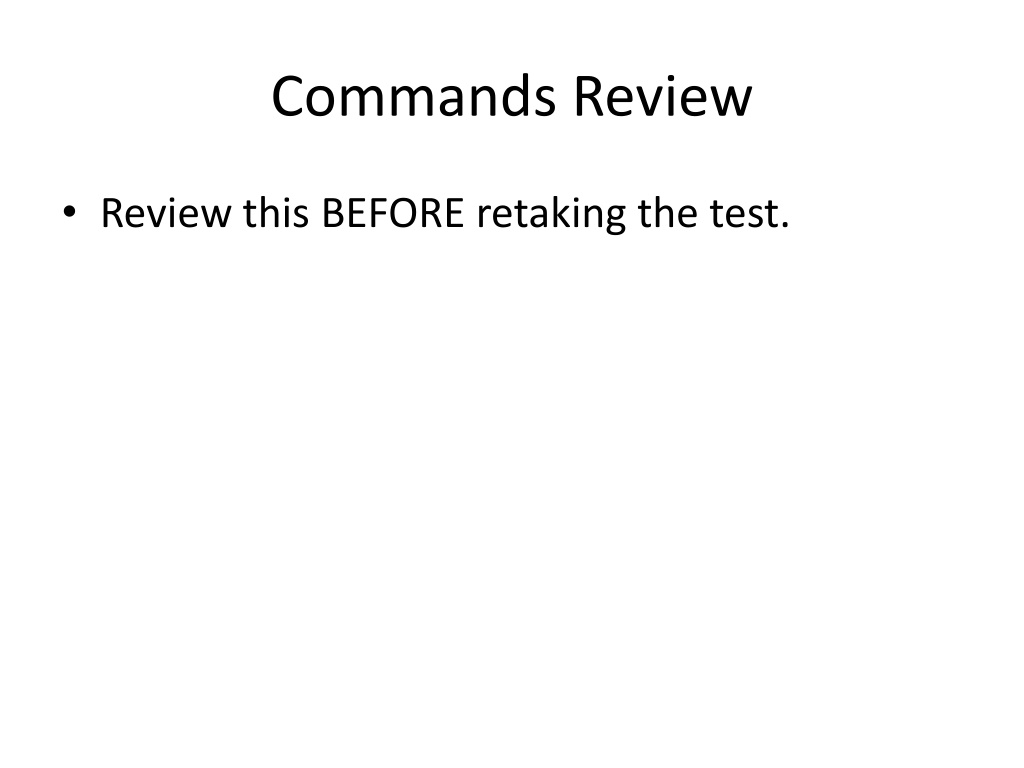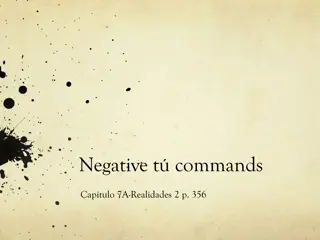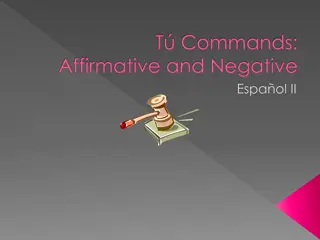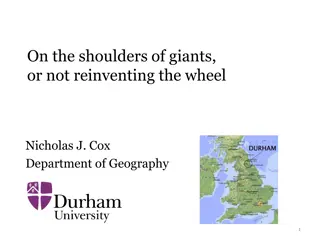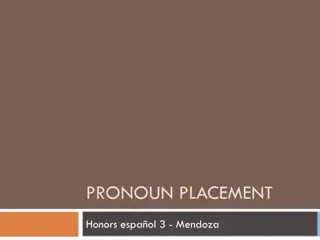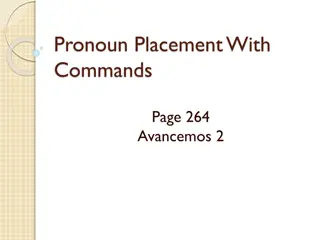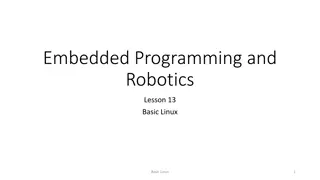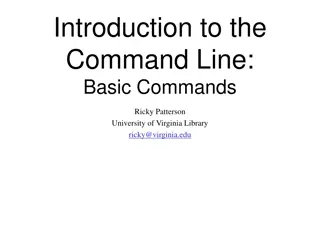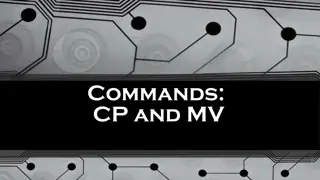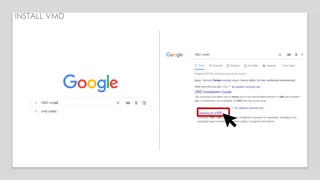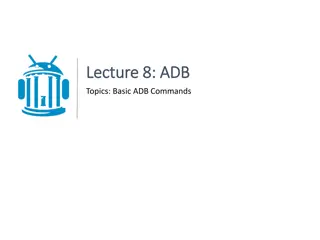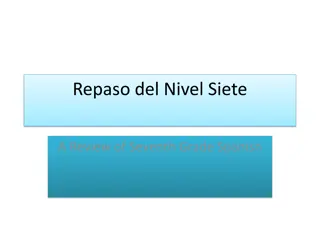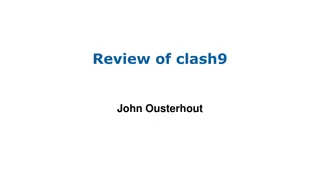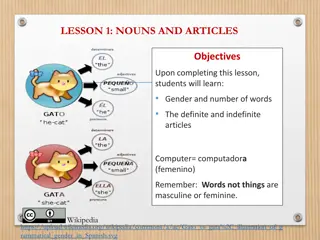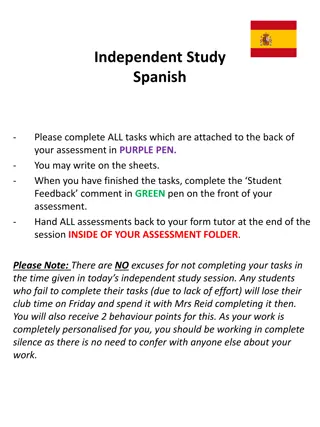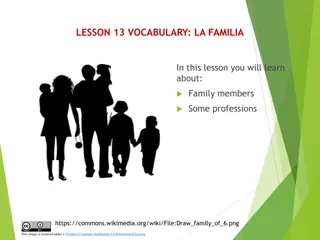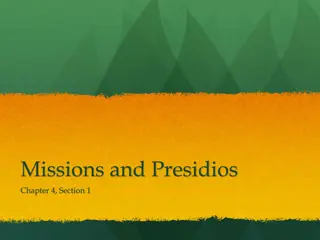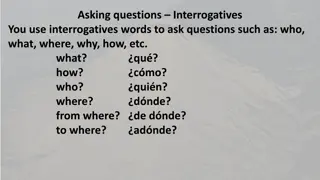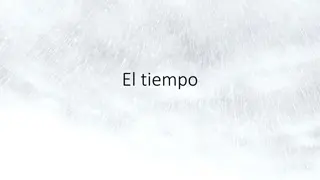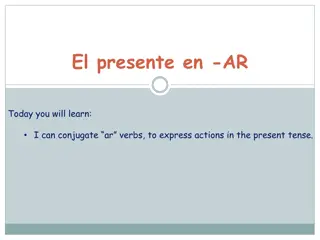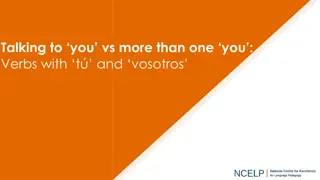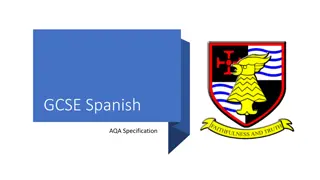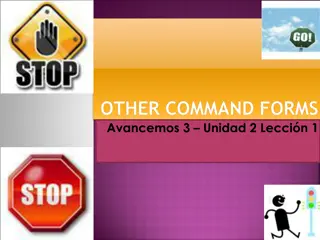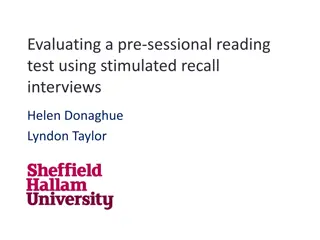Spanish Commands Review and Tips for Test Success
Prepare for your test on Spanish commands by reviewing the formation of affirmative, negative, and stem-changing verbs. Learn how to form Ud., Uds., and negative commands, and understand the nuances of -car/gar/zar verbs. Master the use of el, la, los, and las pronouns for effective communication in Spanish.
Uploaded on Sep 27, 2024 | 0 Views
Download Presentation

Please find below an Image/Link to download the presentation.
The content on the website is provided AS IS for your information and personal use only. It may not be sold, licensed, or shared on other websites without obtaining consent from the author. Download presentation by click this link. If you encounter any issues during the download, it is possible that the publisher has removed the file from their server.
E N D
Presentation Transcript
Commands Review Review this BEFORE retaking the test.
Commands Review An INFINITIVE is a verb that ends in -ar -er -ir Examples: lavar, vivir, beber, comer, limpiar
Commands Review The way t commands are formed depends on the INFINITIVE. If it ends in ar, drop the r . If it ends in er or ir, drop the r . Examples: Bebe drink Limpia - clean
Commands Review How do you form UD. Commands? Easy ..take habla for example. Change the a to an e and you get hable, which is the UD. form.
Commands Review How do you form UDS. Commands? Easy ..take habla for example. Change the a to an e and you get hable, Now add n and you get hablen, which is the UDS. form.
Negative Commands To form the negative command of an Ud. command, just add NO. an Uds. command, just add NO. (The command itself is the same in the affirmative as in the negative.) Only the T command changes (from a to e or from e to a, plus add an s ). Example: No hables No comas No saques
Commands Review Stem-changing verbs like JUGAR and QUERER change from u to ue and e to ie . These changes stay when you turn the verb into a command: Juega play Quiere want The negavive T command is: No juegues We changed the a to e and added an s Plus it s a car/gar/zar verb (que, gue, ce)
Commands Review -car/gar/zar verbs are regular ar verbs. You drop the R to make a t command and you turn the a to an e to make an Ud. Command. And to make an Uds. Command, you turn the a to an e AND add an n. But when you change the a to an e, you have to replace the c with qu, the g with gu and the z with c (so you end up with -que, -gue, and -ce.)
Commands Review el, la, los, and las mean the They look a lot like lo, la, los and las But they are NOT the same. El perro (the dog) can be converted into the pronoun it (lo). La casa (the house), can be converted into the pronoun it, too (la).
Commands Review Los estudiantes can be converted into the pronoun them. Example: Traelos. (Bring them.) Las casas can be converted into las, which means them. Example: Limpialas. (Clean them.)
Commands Review Double object pronouns are when you have two pronouns together in one command. Example: Show it to me. It is one pronoun and me is another one.
Commands Review Irregular Commands: Tener ten no tengas Hacer haz no hagas Salir sal no salgas You have to memorize the irregular ones (they are in your notes!).
Commands Review Test yourself: What is the negative of Escuchenme. (Listen to me.) ? A. No escuchenme B. No me escuchen c. No me escuchas d. No me escuchan
Commands Review No me escuchen. It s an UDS. Command (it ends in n ) and does not change when you put it in the NEGATIVE form.
Commands Review Test yourself (one more): What is the negative of Lavalo. (Wash it.) ? A. No laveslo. c. No lo lavan B. No lo lavas d. No lo laves.
Commands Review d. No lo laves. It s an T Command (it ends in a lava and then has the pronoun lo ). T commands always change in the NEGATIVE form. a changes to e, plus you add an s.
